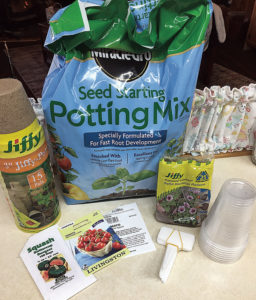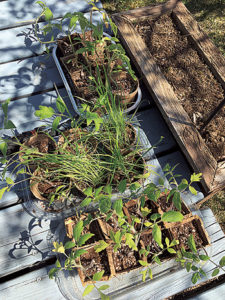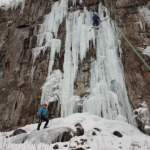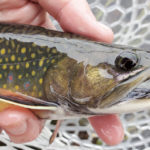For all of the many things that the beautiful Lake Superior region has going for it, it does have a big challenge for gardeners: the harsh climate means that the growing season is remarkably short. With just a few quick months of frost-free ground, planting and harvesting a garden in this climate is a challenge. Planting a seed directly into the ground in early summer will often not give enough growing time to have a harvest before the ground freezes again in the fall. Not to be discouraged, however, experienced gardeners have workarounds, including one of the best methods of ensuring a healthy harvest: starting seeds indoors.
According to Bob Olen, horticulturist from St. Louis County, early spring is a good time for gardeners to start planning for starting seeds, since most need four to 10 weeks of growth before transplanting into a garden. Olen said he uses June 10 as the transplanting date from which to backtrack, so backtracking 10 weeks means starting the earliest seeds inside around April 1. (The exception is onions, which should be started even earlier, at the beginning of March.) Seeds can potentially be started earlier for those with greenhouses, but those who are moving plants straight from indoors to a garden shouldn’t start too early, lest the plants get too leggy inside. Many summer flowers such as petunias should be started 10 weeks out (early April), while warm-season crops like tomatoes, eggplants and peppers should be started six to eight weeks out (mid-late April). Some crops like vine crops only need to be started two weeks prior to planting in the garden.

Olen said that his biggest tip for beginners is to choose high quality, viable seeds to start with, since they will beget healthier plants and yield more crops. (Local UMN Extension offices can give recommendations on the best places to buy seeds.) Since young seedlings are very sensitive to salts and fertilizers, seeds should be started in a pathogen-free, fertilizer-free starting mix. The instructions on the backs of the seed packets will say how deep to plant them, and it is best to plant seeds in individual containers with drainage holes. The starting media should be kept warm, about 75 degrees: many gardeners use heating mats to keep the soil warm. Once the seedlings have grown 1-2 leaves, they can be transplanted from the starting mix into a growing mix, and can tolerate half-strength fertilizer.
“Seedlings are like little kids: they’re very vulnerable and you have to baby them a bit,” Olen said.
Providing adequate light and water is key to successfully starting seeds indoors. Seedlings should be kept medium-moist without being overwatered. Gine Meissner, a Master Gardener in Cook County, said gardeners can use a spray bottle to moisten the seedling soil without washing the seeds away, and can use a dome to keep the containers humid until the seedlings have their first set of true leaves. Meissner highly recommends the use of growing lights and heating mats to help the success of the seedlings.
“Counting on natural light indoors does not provide adequate lighting for germination and growth of seedlings. You do need to purchase ‘grow lights’ or use fluorescent lighting. The seedlings need 12 to 16 hours of light each day. I place them on a timer making it is easy to maintain that requirement,” she said.

As spring turns to summer and the seedlings get ready to transplant, they need to “harden off,” or get acclimated to being outdoors and exposed to the elements. Bob Olen said that seedlings should be exposed to cooler temperatures without much wind, and should get acclimated to partial sun before being put into full sun.
“It’s best to plant them in the garden on a cooler, cloudy day. Wind can be tough on young transplants, so make sure the planting day isn’t too windy,” Olen said.
Both Olen and Meissner said that it’s important for beginners to remember to have patience, take it slow and know that making mistakes is normal when starting out.
“Keep the process as simple as possible so that you can maintain the plants in a healthy manner,” Meissner said. “You don’t need any expensive, fancy equipment or a lot of space to start with. Start small and see if this is something you would enjoy pursuing. It involves more time than you would at first realize but to a gardener, the joy of growing something from seed to food is immeasurable.”
More information about seed starting can be found online through UMN-Extension.




